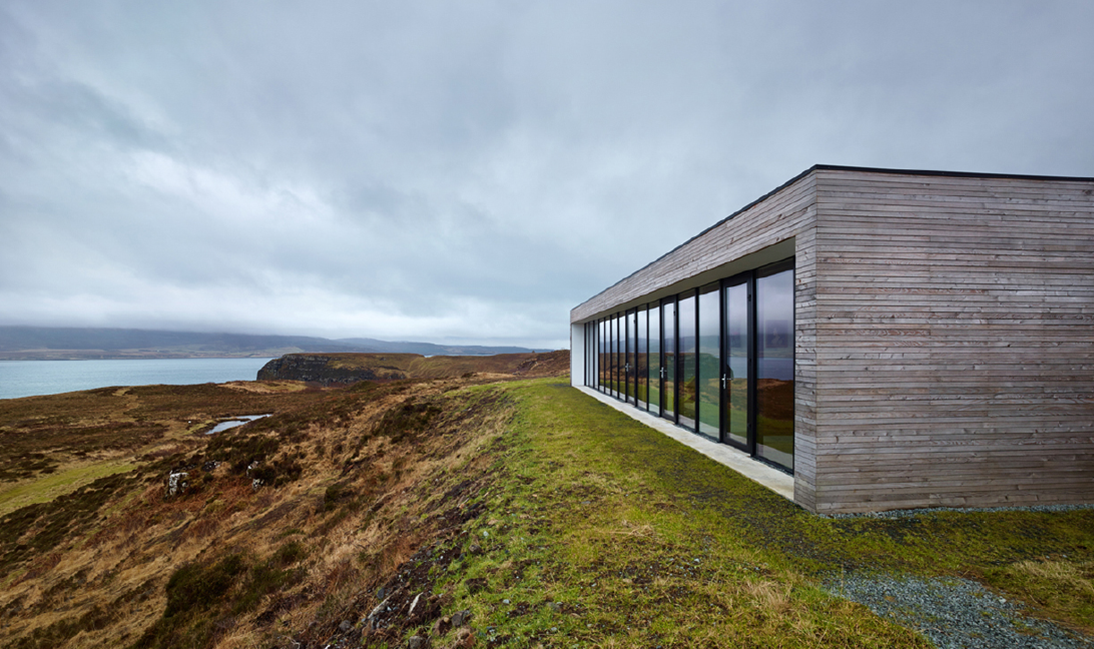
Architect: Dualchas Architects
Client: Mr Ian MacLean, Mr Robbie Pancic
Contractor: James MacQueen Building Contractors
Context: Rural
No. of homes: 1
Key Aims and Objectives
Living is a decision that is also defined by the choice of place. This dwelling seeks an answer through the specific means of architecture of how the qualities that make a place can be distilled into built matter in our times.
It is not only a reminder of the isolation and mystery of its location but also of the rarity of being able to live amongst the drama of the ever changing atmospheric conditions in this part of the world.
How much building is required to inhabit a place?
Key Challenges and Opportunities Posed by the Site
The site is located in North West Skye. It manifests itself as a contradiction: far reaching views to the North East and harsh winds from the South West.
An existing ruin marks the entrance situation of the croft, while the edge of the cliff locates the dwelling on its site high above the water's edge.
In order to address the site conditions, the building consists of two volumes; one closed, the other open. The first contains all serving functions to support the main open rooms. Together a place is created that provides shelter and privacy whilst maintaining focus on its surroundings.
Approach and Execution
The building is first seen as a wall in front of the dominant background. As the entrance path unfolds and cuts deeper into the landscape, this relationship changes, with the building becoming the dominant focal point. This suspense is released upon entry. One wall of the main open volume is omitted and the visitor stands in front of a fully glazed screen atop of the cliff.
All voids created between the two volumes are fully glazed. Their location remain readable from the inside. They act as vistas, remaining open in the in-between and looking back on both the building and its setting.
Future-Proofing
Both the location and function of the two volumes are confirmed by the use of material. Caithness stone for the retaining wall and larch for the open plan main rooms. On the interior, materials are omitted to give dominance to the characteristics of the site acting as a gallery filled with the objects and memories the client surrounds themselves with.
The desire for a low carbon footprint is reflected in the Scottish building regulations and therefore common practice for new builds. In addition the property is served with a heat recovery unit and a heat pump linked to the under floor heating system that turns the finished concrete floor into one warm slab and distributes the heat equally in the well insulated and air-tight envelop of the building.